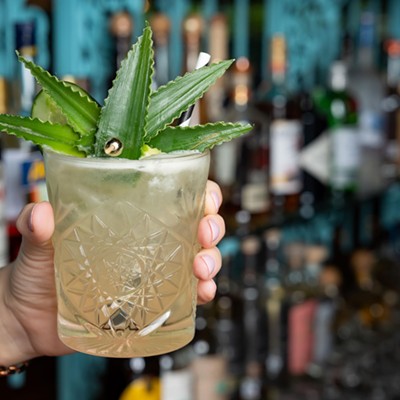Friday's post on moldy corks seemed innocuous enough. But my proposal that we discuss cork taint and other wine fitness issues quickly led to a heated comment thread.
Eating Our Words blogger Nicholas Hall maintained that "cork sniffing" is "myth/bullshit" while Houston wine blogger Tom Gutting, author of From the Gutt, countered:
- It's not a myth. Sniffing the cork is the first act that can put you on guard for a wine suffering from cork taint. There are times when the cork will give off TCA's tell-tale musty aroma, putting you on notice that you should be particularly on the lookout for cork taint when you first taste the wine.
Another reader, Artie (no hyperlink), observed that "smelling the cork to judge the quality of the wine is like smelling a sock to judge the quality of the shoes!"
We'll address the issues of cork taint, TCA (Trichloroanisole), and other wine flaws over the next weeks.
But to address the controversy stirred in the wake of Friday's post, both Nicholas and Tom are correct.
Smelling the cork can reveal the presence of TCA or other compounds that can compromise the wine's fitness. And as Tom points out, even when the cork is affected by TCA (the most common source of cork taint in wine), it doesn't necessarily mean the wine is bad or undrinkable.
But the practice of smelling and presenting the cork to the restaurant patron is, as Nicholas points out, more often than not misapplied.
The wine steward may smell the cork to examine its fitness. But as KBell notes in the comment thread, the wine steward should "first feel the cork for moistness." That's the more critical element in her/his assessment: If it's dried out, there is a greater likelihood that the wine has prematurely oxidized (we'll address this issue as well in a future post).
The real reason for presenting the cork to the patron is not to smell it but rather to ascertain the authenticity of the wine's provenance. Even today, with the prices of fine wines like Bordeaux rising as the Chinese thirst for fine wine continues to grow, counterfeiting is not uncommon. And when you're paying $700-plus for a bottle of wine, the branding on the side of the cork helps you to establish its provenance. In many countries, like France and Italy, the cork may also report information on where and when the wine was bottled (generally through acronyms and codes).
When it comes to wines that we drink every day and even most of the wines that we drink on Saturday night and for special occasions, not only is it superfluous for a waiter to present the cork to the patron, it's downright silly. The choreography of waiter making the guest feel uncomfortable by expecting commentary on the fitness of the cork is an affectation derived from watching too many movies on the Turner Classic Movie channel. (One of my pet peeves is when waiters place the cork directly on the table; if it is going to be examined, it should be presented on small tray.)
In my view, Artie said it best: "Smelling the cork to judge the quality of the wine is like smelling a sock to judge the quality of the shoes!" Ultimately, it's not our assessment of the cork but rather our evaluation of the wine itself that reveals its fitness.
Please check back for more posts on corks and wine fitness. In the meantime: Can anyone tell me what type of wine was sealed with the mushroom cork in the image at the top of this post? A hint: It's an expensive and extremely rare wine to find in the U.S.
Follow Eating Our Words on Facebook and on Twitter @EatingOurWords






